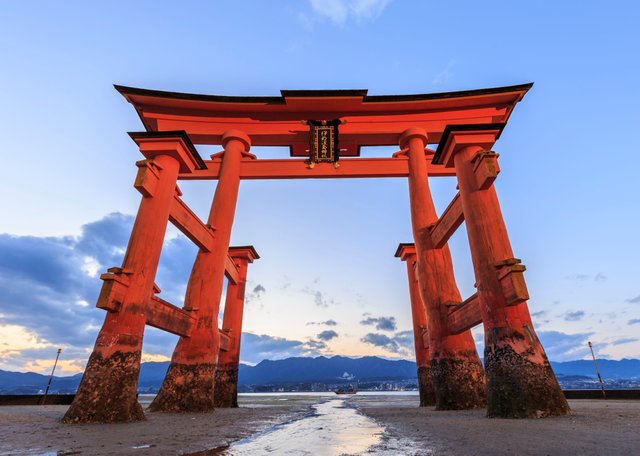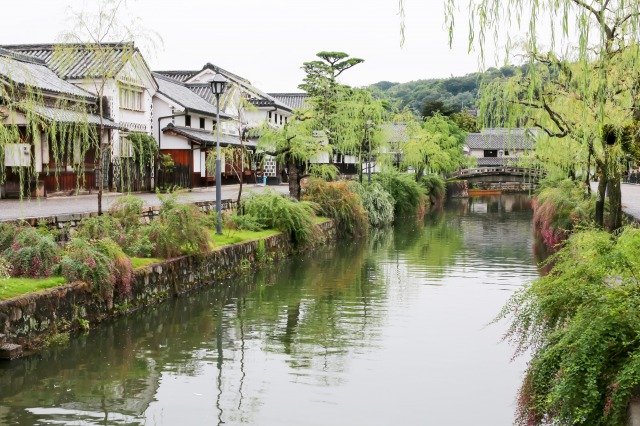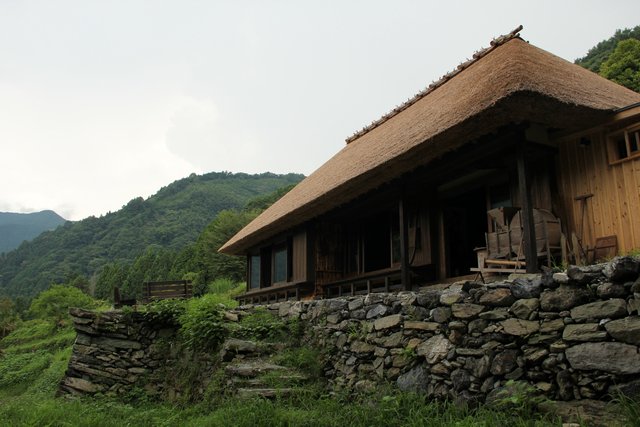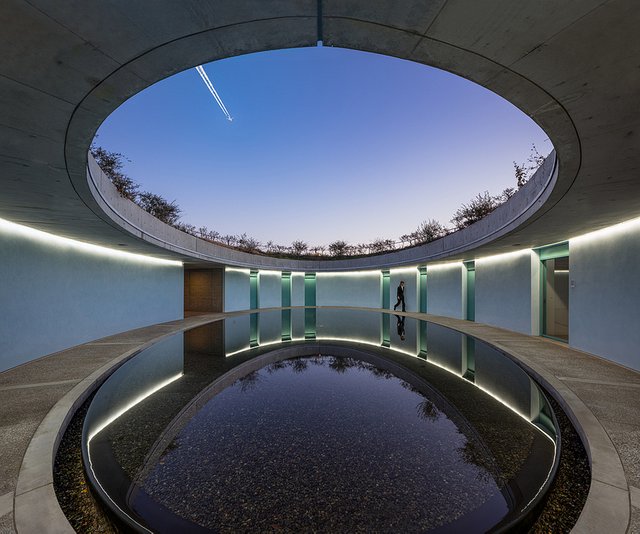My Japan Travel Advice
During the last twenty years I have been an occasional visitor to Japan—often enough not to be thrown completely when things are strange, intermittent enough to need lots of advice from old Japan hands. By now I have heard enough of the advice to distill it into what might be called the Three Laws of Tourism in Japan.

Law No. 1: Do Not Rent a Car. The Japanese drive on the left side of the road. Most streets literally do not have names. Highway signs are less frequent than they are in the United States, are written in kanji (characters), and are often laid out differently (if a sign tells drivers to turn left in half a mile, there frequently won’t be another one at the turn itself). You will get lost, is the Japan hands’ advice. Terribly, terribly lost.
Law No. 2: Do Not Travel During Golden Week. Golden Week is a conglomeration of four major national holidays in a week-long span, from April 29 to May 5. It’s like Memorial Day, the Fourth of July, and Labor Day all rolled into one traffic-snarled mess. You will be crowded, is the advice. Terribly, terribly crowded.
Law No. 3: Do Not Go Into Rural Japan. Compared with U.S. cities, Japanese cities bend over backward to help foreigners. The countryside is another matter. It is as free of English speakers as, say, the Ozarks are of Japanese speakers. You will get lost, is the advice. Terribly, terribly lost.
Not long ago we found ourselves driving a rented car during Golden Week across Shikoku, the smallest and most rural of Japan’s four main islands. This gave us an opportunity to test the Three Laws. Law No. 1 turned out to be definitely not true. Law No. 3 turned out to be slightly true. Law No. 2 is definitely true. But we had a terrific time nonetheless.
The trip was not entirely our fault. My family and I were already in Japan, living for some months in a rented apartment in Tokyo, when we were visited by friends from California. Our friends very much desired to see the countryside and did not want to spend all their time in trains. A mix-up in communications occurred, and we found ourselves locked into Golden Week. We could have jettisoned the whole thing, but didn’t. Instead we started planning our journey.
Renting cars in Japan is “not recommended for novices,” in the terse phrase of Gateway to Japan, which I would describe as the best guidebook to the country that I have encountered if it hadn’t been written by my sister-in-law, June, and her ex-boyfriend. (The book actually is very good, though all the prices and some of the hotel and restaurant recommendations are outdated because June has been too busy with other things to produce a recent version.) As Gateway notes, car-rental prices are high, tolls are astonishingly costly, and in any big city, mass transit makes driving unnecessary. But these reasons are not why the experts advise tourists not to rent cars. The real problem is Japanese cartography.
Japanese maps tend to come in two varieties: small, schematic, and bewildering; and large, fantastically detailed, and bewildering. The first kind is found on promotional material, such as the information given to hotel guests. Consisting of Kandinsky-esque sprays of arrows and geometric shapes, these maps confound even the Japanese—witness the confused, map-clutching people constantly outside the kobans, or police kiosks, in every urban neighborhood. We were faxed this kind of map by a car-rental agency in Okayama, a midsize city between Kyoto and Hiroshima, where we decided to begin our trip. Although the agency was only 200 yards from the train station, we spent half an hour trying to find it.
The second kind of map is relied on by all Japanese drivers. With good reason: Japan’s road network, which dodges mountain ridges and sharp valleys and traces the nation’s fractally complex coastline, is hopelessly convoluted. The most readily available dual-language road map with the requisite detail is the Shobunsha Japan Road Atlas, obtainable at Web sites like Omnimap.com and Maps2anywhere .com (shop around, because prices vary wildly). It is the size of a small telephone book, but we carried it gratefully.
Golden Week traditionally begins, each April 29, with Greenery Day, a celebration of the environment. On this day millions of Japanese get into their cars and sit in traffic jams for hours, belching exhaust into the air. Last year the government decided to make a change. It decreed that starting next year, April 29 will be Showa Day, in honor of the man known inside Japan as the Emperor Showa and outside Japan as Hirohito. (Greenery Day will move to May 4.)
We set out, along with everyone else, on Greenery Day. Our first stop was Kurashiki, a canal-lined coastal town just outside Okayama, whose historic rice-merchant quarter has been converted into elegant museums, cafés, and shops selling local Bizen pottery. During Golden Week the town holds a night festival in the quarter. With the canals lighted by lanterns at water level, a single gondola-like boat moved slowly down the channel, carrying a kimono-clad woman who played the erhu, the two-string Chinese violin. The sobbing, ultra-Romantic plaint of the strings, the lights flickering over the musician’s white kimono and the restored black and white walls of the buildings, the delicious scent of yakisoba and octopus balls in the air—it was extraordinary. Looking forward to teasing my sister-in-law, I loudly mocked Gateways warning to “avoid visiting” Kurashiki during “national holidays”—until we went to our hotel.

Japan has three basic types of accommodation: Western-style hotels, ryokan, and minshuku. Outside the big cities, where they are haunted by business- people, the first type tends to be dreary and cramped—we have stayed in one with so little space that two people couldn’t walk around the room at the same time. Ryokan are the posh Japanese inns one reads about in travel brochures. Sleeping accommodations feature futons and kakebuton (sheet-encased comforters) on tatami-mat floors. Breakfast and dinner consist of a large number of small, ornate dishes. Many have hot baths—ofuro—that overlook tiny, obsessively perfect gardens. Minshuku are more or less the same thing, but much cheaper—the closest Japanese equivalent to bed-and-breakfasts.
During Golden Week ryokan jack up their prices high enough to melt credit cards, and minshuku jack up their prices to usual ryokan levels. Practically speaking, though, the ryokan price hike made no difference to us—we couldn’t find any unbooked ryokan. Alas, the only accommodation we could find was a minshuku in the foothill town of Bitchu-Takahashi, more than an hour by car from Kurashiki.
Within moments of our arrival we realized why the place still had openings when we were planning our trip, two months before Golden Week (the very last minute by Japanese standards). Located above the intersection of two busy truck routes into the mountains, the minshuku vibrated through the night like a gigantic Magic Fingers bed. Until that night I had believed that Japanese guesthouses were universally clean and welcoming. The hotelier here, however, trained as an opera singer, was profoundly disappointed by his current occupation. We guests were not spared his moods. Nor were we spared the three-inch poisonous centipede that crawled out of the shower drain.
Matters scarcely improved in the small city of Matsuyama, which sits at one end of the staggeringly long—and staggeringly expensive—toll bridge across the Inland Sea. Because the minshuku we would be staying in had faxed us a map, we spent only about two hours finding our accommodations after we hit the city. Our hosts were much nicer than in Bitchu-Takahashi, but the rooms were even worse, with paper-thin futons. Waking up with back spasms, our friends saw the kanji on the wall. They announced that they were done with travel during Golden Week and decamped for Kyoto, where they had other friends.
My wife and I were too stubborn to quit. Besides, we wanted to see Chiiori. Co-owned by the expatriate writer and critic Alex Kerr, Chiiori (the House of the Flute) is a nearly 300-year-old thatch-roofed farmhouse in a tiny hamlet in the Iya Valley, one of the least-developed places in technophiliac Japan. The house is intended to exemplify a traditional balance between mankind and nature, a balance Kerr believes Japan has lost. It is heated entirely by a smoky irori hearth, a square hole cut into the floor in the middle of the room. People sleep communally, ten or more at a time, around the irori.

The staff had suggested we not go there by car, because we would get lost. We ignored their advice, and got lost. Part of the reason was that even our detailed road atlas didn’t have enough detail. But another part was that in the Japanese countryside, nobody seems to know where anything is—the flip side of the wonderful national propensity for staying in the same place for generations. (Once we went to a children’s-book museum—the Japanese have a penchant for small, idiosyncratic museums—near the common tourist destination of Kanazawa. When we finished our visit, we asked half a dozen people, all locals, how to get to the highway to Kanazawa, a road we knew was within a mile. None could tell us. “Nobody goes there,” one said.)
When we finally found Chiiori, darkness had long since fallen. The Chiiori Web site describes the accommodations as “primitive.” One definition of the word might be “reachable only by a long, narrow path with no lights.” Wrangling our wheeled suitcase over a stone, I inadvertently stepped off the path. In this way I discovered that the path was on the edge of a six-foot drop. Fortunately, I landed in a big thorn bush.
In the morning we were glad we had made the journey. Chiiori overlooks a steep valley that was mysterious with morning fog. When the mist cleared, the big sleeping room had a view of mountains as black and spiny as those in ink drawings. That evening we went to a country onsen (a public bath in a mineral hot spring), blissfully uncrowded even during Golden Week, from which we could see the stars. (The steaming water felt good on my cuts and bruises, too.)
But my favorite part of Shikoku wasn’t actually on Shikoku itself but on Naoshima, a little island in the strait between Shikoku and the mainland. Access is via a short ferry ride. The ferry docks at a former fishing village, from which visitors can take a bus to Benesse House, one of the best of Japan’s innumerable private art museums.

Tadao Ando, arguably Japan’s most prominent architect, designed the museum, using the polished concrete that is his signature. The collection is small, wholly contemporary, and carefully selected, as if the guiding principle were “Choose only two works from each artist, and make them both count.” Visitors can stay in an attached hotel or, as we did, in big pao (Mongolian-style yurts) by the beach. The museum extends into the village, where four old houses have been transformed into art installations, of which our favorite was Tatsuo Miyajima’s “Sea of Time,” from 1998. In an elegant move, Miyajima built a large reflecting pool inside the house and created a reflected “starscape” by placing small, softly blinking neon numbers beneath the surface.
Watching the numbers wink on and off, I imagined the installation as emblematic of Japan’s fascinating simultaneous embrace of tradition and high technology. In a few hours we would be driving back to Okayama, and then returning to Tokyo. When we left, after a walk on the beach, we promised ourselves we would come back to Shikoku—but not during Golden Week.